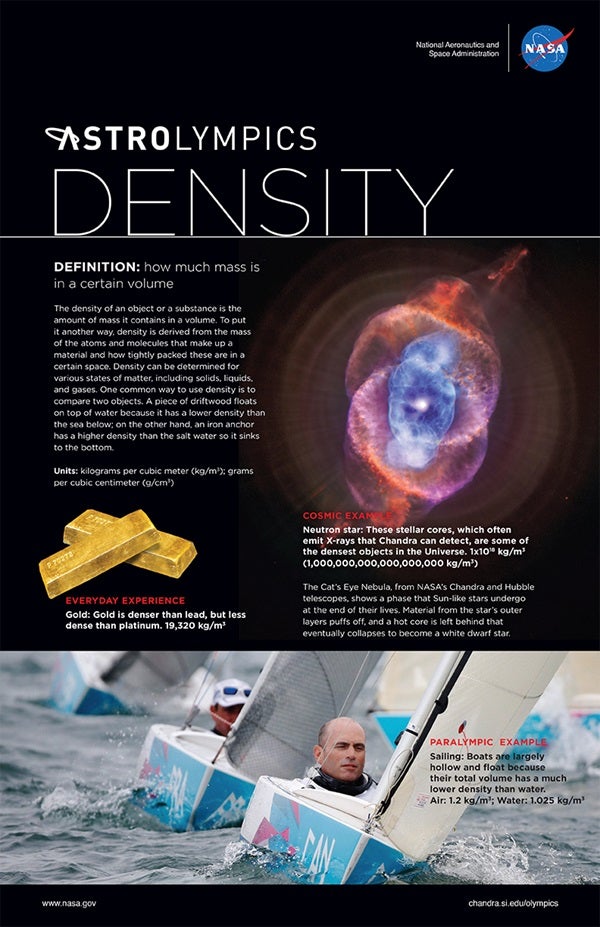This project from NASA’s Chandra X-ray Observatory highlights the physical connections between sport and space. Examining various topics including speed, distance, time, mass, rotation, and pressure, AstrOlympics explores the impressive range of these different physical properties.
The 2018 Olympic Games will be held in South Korea between February 9-25.
NASA’s Marshall Space Flight Center in Huntsville, Alabama, manages the Chandra program for NASA’s Science Mission Directorate in Washington. The Smithsonian Astrophysical Observatory in Cambridge, Massachusetts, controls Chandra’s science and flight operations.
AstrOlympics provides brief explanations of the physical concepts and then compares examples from common every day experiences, Olympic events, and discoveries from space made with Chandra and other observatories. For example, the rotation section compares the spin of an ice skater to that of a washing machine to the rotating of a spinning dead star.
More information about the Chandra X-ray Observatory at http://chandra.si.edu/ and http://www.nasa.gov/chandra.
NASA’s Marshall Space Flight Center in Huntsville, Alabama, manages the Chandra program for NASA’s Science Mission Directorate in Washington. The Smithsonian Astrophysical Observatory in Cambridge, Massachusetts, controls Chandra’s science and flight operations.












